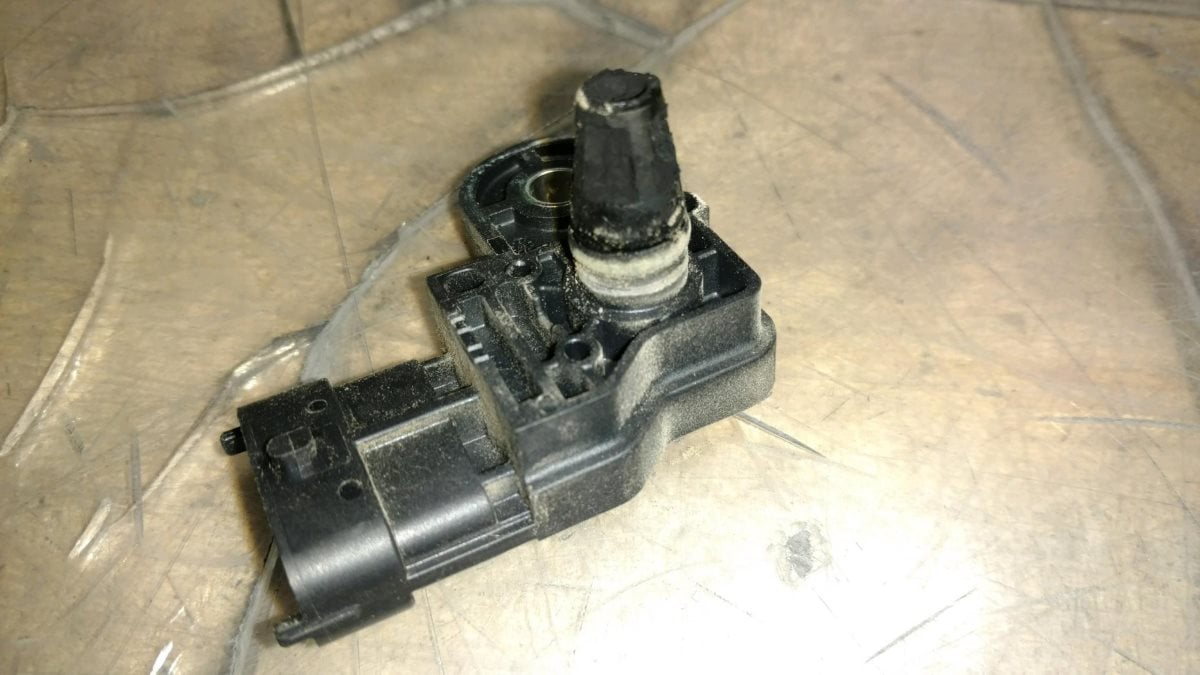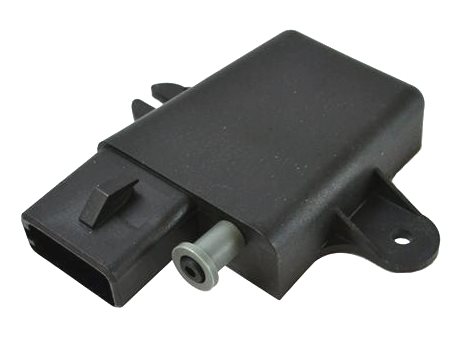What does the barometric sensor do?
Engines use a combination of air and fuel which is ignited by the spark plugs to create combustion. These series of combustion’s turn the crankshaft and camshaft and allow your vehicle to run. The barometric sensor (also known as the barometric air pressure sensor, baro sensor or BAP) is one of many sensors that monitor air levels and allow adjustments to be made to improve this combustion process.
Driving at higher altitudes can be challenging for engines. As your altitude increases, the air becomes thinner. This means that less air will enter your engine. The barometric sensor is responsible for measuring the atmospheric pressure of the environment that the car is driving in. This allows your car’s onboard computer to make adjustments to fuel injection in order to run optimally, reduce misfires and improve fuel economy.
Problems with the barometric sensor can result in too much fuel or too much air entering your engine. This can result in a lean fuel mixture (too much air) or a rich fuel mixture (too much fuel) and affect the performance and fuel economy of your car.
Symptoms of a faulty barometric sensor:
A malfunctioning barometric sensor displays all the common symptoms associated with an incorrect air/fuel ratio. However, one way to tell it apart is that these symptoms may only appear when driving in conditions of high or low air density.
- Increased fuel consumption – A faulty barometric sensor will often cause your engine to use more fuel. This happens due to improper air/fuel levels which cause fuel to not burn correctly.
- Increased emissions – When fuel doesn’t burn correctly, it will exit your vehicle in the form of black smoke from your exhaust. Increased emissions can lead to your car failing its Warrant of Fitness.
- Reduced acceleration and engine performance – Inaccurate barometric sensor readings can lead to incorrect air-fuel mixture calculations. This can result in poor engine performance, such as decreased power, reduced throttle response, hesitation, or rough idling.
- Problems starting your car – A faulty barometric sensor may cause difficulties when starting the engine. The ECU relies on accurate barometric pressure information to determine the correct fuel injection timing during startup. If the sensor provides incorrect readings, it can affect the fuel delivery, making it harder for the engine to start or causing extended cranking times.
- Inconsistent idling – Inconsistent barometric sensor readings can disrupt the engine’s idle control system. This can lead to an unstable or fluctuating idle speed, where the engine speed may rise and fall unexpectedly.
- Check engine light on – When your engine’s air/fuel ratio is incorrect due to a faulty barometric sensor, the Check Engine Light will appear on your dash.
Why has my car’s barometric sensor stopped working?
Below are some of the most common reasons the barometric sensor stops working. The failure may be related to other components that aren’t working as they should.
- Wiring or Connector Issues: The sensor’s wiring or connectors can become damaged or loose, leading to a loss of signal or power. This can cause the barometric sensor to stop working correctly or not work at all. Replacing or soldering the damaged wires can often fix this issue.
- Contamination or Blockage: The barometric sensor may become contaminated or blocked by dirt, debris, or engine oil. This can interfere with its operation, preventing it from accurately measuring atmospheric pressure. Removing and cleaning the sensor can usually fix this issue.
- General wear with age: For vehicles with high mileage, the sensor may be prone to eventually failing. Wear and tear to the ECU and surrounding electronics can also disable the sensor. When this happens, the malfunctioning parts(s) will need to be replaced.
Where is your car’s barometric sensor located?
In most cases, the barometric sensor is integrated into the engine control system, and its precise location may differ between vehicles. For accurate information, consult your vehicle’s manual. However, The most common place is within the engine bay, close to the intake manifold or the throttle body. It may be mounted on the firewall, near the engine control module (ECM), or attached to the intake manifold itself.
Car Barometric Sensor Replacement in Hamilton
Is your car in need of a new barometric sensor? If so, we can help! At Grimmer Motors, our team of experienced mechanics can use advanced scan tools to examine your engine for problems related to air/fuel ratio. This allows us to quickly determine if the barometric sensor is the cause of the problem. From there, we can install a new barometric sensor, which will allow for improved engine performance in all conditions.
For barometric sensor replacement for your car in Hamilton, contact Grimmer Motors today!


